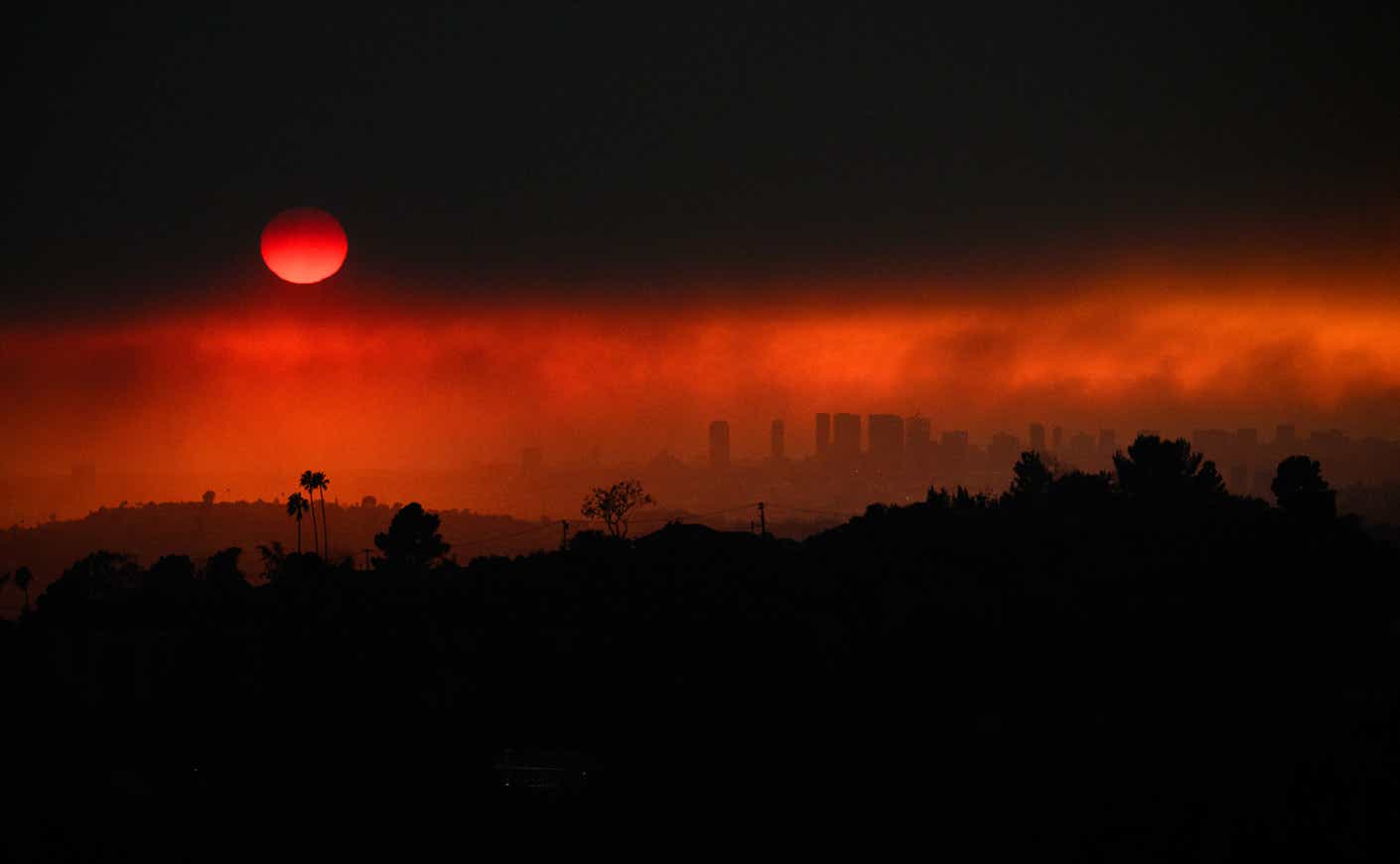The wildfires raging across Los Angeles have created dangerous air quality conditions throughout the city — and far beyond the reach of the flames. As fires like these become more frequent and more devastating because of climate change, experts have warned about the risks of air pollution.
Wildfire smoke contains a noxious blend of particulate matter, nitrogen dioxide, lead, and other harmful chemicals that can exact a high toll on your lungs and heart. Here’s a breakdown of how wildfire smoke impacts the body, what to know about the EPA’s Air Quality Index, and what you can do to protect yourself.
How does wildfire smoke affect the body?
The particulate matter — or tiny particles that are no larger than one-third of the diameter of a strand of hair — is so small that when it’s inhaled, it can lodge deep in the lungs and even slip into your bloodstream, according to the American Lung Association. That pollution can cause relatively minor issues like coughing, stinging eyes, a scratchy throat, headaches, fatigue, and shortness of breath. But it may also trigger asthma attacks, heart attacks, and strokes.
Most of the research on particulate matter has focused more generally on air pollution and not specifically wildfires, but it’s thought that the effects on the body are likely pretty similar, Carrie Redlich, MD, tells Yale Medicine. Repeated exposure to particulate matter has been linked to a wide range of health issues, including lung cancer and a decline in cognitive function. That’s because these particles can spread “everywhere through the bloodstream and trigger inflammatory pathways,” Dr. Redlich says.
Older adults and people with heart or lung conditions are particularly susceptible — as are children, according to the Centers for Disease Control and Prevention, because their airways are smaller and they inhale more air relative to their body weight compared to adults.
What is the Air Quality Index?
One way to determine whether you should be taking precautions is by checking the Environmental Protection Agency’s Air Quality Index. The AQI is a tool that measures the level of certain pollutants in the air, like ozone, nitrogen dioxide, carbon monoxide, and particulate matter. (Readings for particulate matter include both PM10, which refers to particles that are 10 micrometers and smaller, and PM2.5, which is 2.5 micrometers and under. PM2.5 is considered more dangerous, because that debris is so small it can infiltrate the lungs and wind up in the bloodstream.) You can find the AQI in your region by going to AirNow.gov and inputting your zip code.
The AQI ranges from 0 to 500. An AQI of 0 to 50 is considered good; 51 to 100 is moderate; 101 to 150 is unhealthy for sensitive groups; 151 to 200 is unhealthy; 201 to 300 is very unhealthy; and 301 and higher is hazardous.
If the AQI is in the 101 to 150 zone, you’re advised not to spend long periods of time outdoors and to limit strenuous activities. When the air is in the unhealthy range, the best thing to do is to stay indoors as much as possible.
How can you protect yourself from wildfire smoke?
If possible, remain indoors with your windows and doors closed. If you have an air conditioner with a clean filter, you should run it with the fresh-air intake closed, per Yale Medicine. You may also want to consider using an air purifier with a HEPA (high efficiency particulate air) filter. Michael Rubino, a mold and air quality expert, recommends this one.
If you have to go outside, experts advise using a well-fitted N95 or P100 respirator, which can filter out most particulate matter, but not other “toxic gases or vapors,” according to a statement released by the city of Long Beach, which began providing N95 masks to vulnerable residents. We’ve rounded up a few masks that you can buy online right now.









